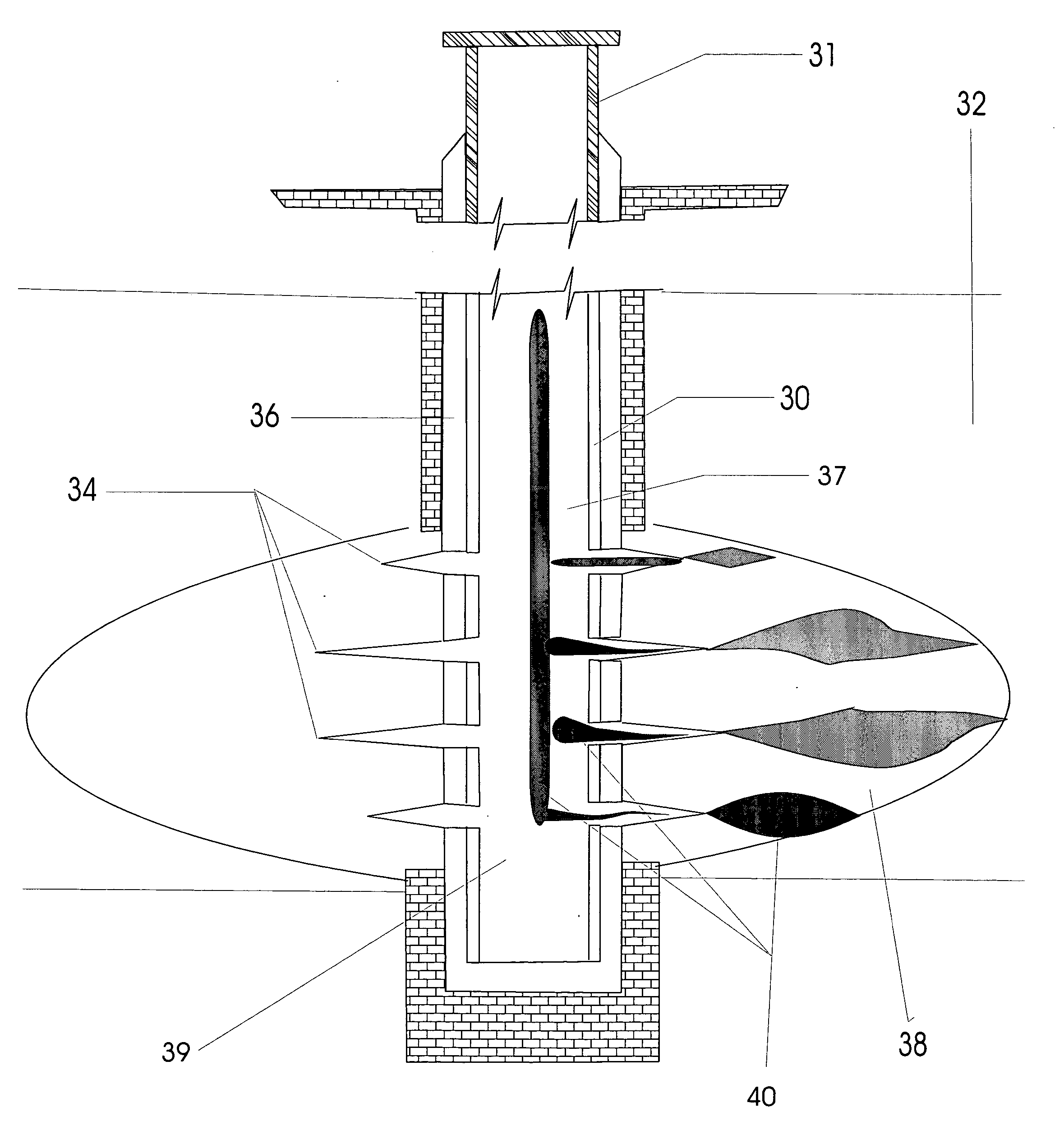Methods and compositions for introducing conductive channels into a hydraulic fracturing treatment
a technology of conductive channels and hydraulic fracturing, applied in the field of methods, can solve the problems of reducing the efficiency of treatment, reducing productivity, and reducing the efficiency of hydraulic fracturing, and achieve the effect of adversely affecting the permeability of the particulate pack
- Summary
- Abstract
- Description
- Claims
- Application Information
AI Technical Summary
Benefits of technology
Problems solved by technology
Method used
Image
Examples
example 1
Fracture Conductivity Apparatus
[0071]Two different fracture conductivity apparatus was used to experimentally emulate and verify the relationship between fluids of varying viscosity and / or density in a subterranean system. The first slot cell was cylindrical, approximately 6-feet (1.83 m) long and 2-feet (0.61 m) wide, constructed of 1-inch (2.54 cm) thick Plexiglas™ (see FIG. 3A, and FIGS. 4–6). As shown in FIG. 3A, the proximal end 10 of the cell 1 contained an injection port 14 and a septum 12, while the opposite, distal end 16 of the cylindrical cell had an exit port 18 which could be manually controlled. Fluids were pumped through the cell using air-driven accumulator style pumps.
[0072]The second fracture conductivity apparatus / slot cell was constructed in order to visually study the effects of the embodiments of the present invention in a simulated, downhole environment. The visualization cell was constructed of transparent Plexiglas™ sheets that were ½ inch (1.27 cm) thick, c...
example 2
Fracture Model Producing Upwardly Directing Perforations
[0074]The fracture cell shown in FIG. 3A was pumped full of a first fracturing fluid, 40 lb Low pH Medallion (BJ Services Company, Houston, Tex.), using a standard low-pressure reservoir air pump system, at a constant pressure of 15 psi (101 kPa). A second fracturing fluid, Super Rheo-Gel (BJ Services Company, Houston, Tex.) containing bauxite proppant, was then pumped into the fracture cell using the same pump system, at a pressure of 15 psi. As the Rheo-Gel flowed through the cell, it created a perforation that gradually sloped upwards, as shown in FIG. 3. This perforation created by the two fracturing fluids exhibited no apparent intermixing of the fluids at their interfaces.
example 3
Fracture Model Producing Downwardly Directing Perforations
[0075]The fracture cell shown in FIG. 3A was pumped full of a first fracturing fluid, 40 lb Low pH Medallion (BJ Services Company, Houston, Tex.), using a standard low-pressure reservoir air pump system, at a constant pressure of 15 psi (101 kPa). A second fracturing fluid, 40 lb SpectraFrac (BJ Services Company, Houston, Tex.) containing 6 psa (pounds sand added) was then pumped into the fracture cell at a constant pressure of 15 psi (101 kPa). As the Spectra-Frac flowed through the cell, it created a viscous finger that gradually sloped downwards, as shown in FIG. 5. This viscous finger created between the two fracturing fluids had no intermixing of the fluids at their interfaces.
PUM
| Property | Measurement | Unit |
|---|---|---|
| density | aaaaa | aaaaa |
| density | aaaaa | aaaaa |
| density | aaaaa | aaaaa |
Abstract
Description
Claims
Application Information
 Login to View More
Login to View More - R&D
- Intellectual Property
- Life Sciences
- Materials
- Tech Scout
- Unparalleled Data Quality
- Higher Quality Content
- 60% Fewer Hallucinations
Browse by: Latest US Patents, China's latest patents, Technical Efficacy Thesaurus, Application Domain, Technology Topic, Popular Technical Reports.
© 2025 PatSnap. All rights reserved.Legal|Privacy policy|Modern Slavery Act Transparency Statement|Sitemap|About US| Contact US: help@patsnap.com



